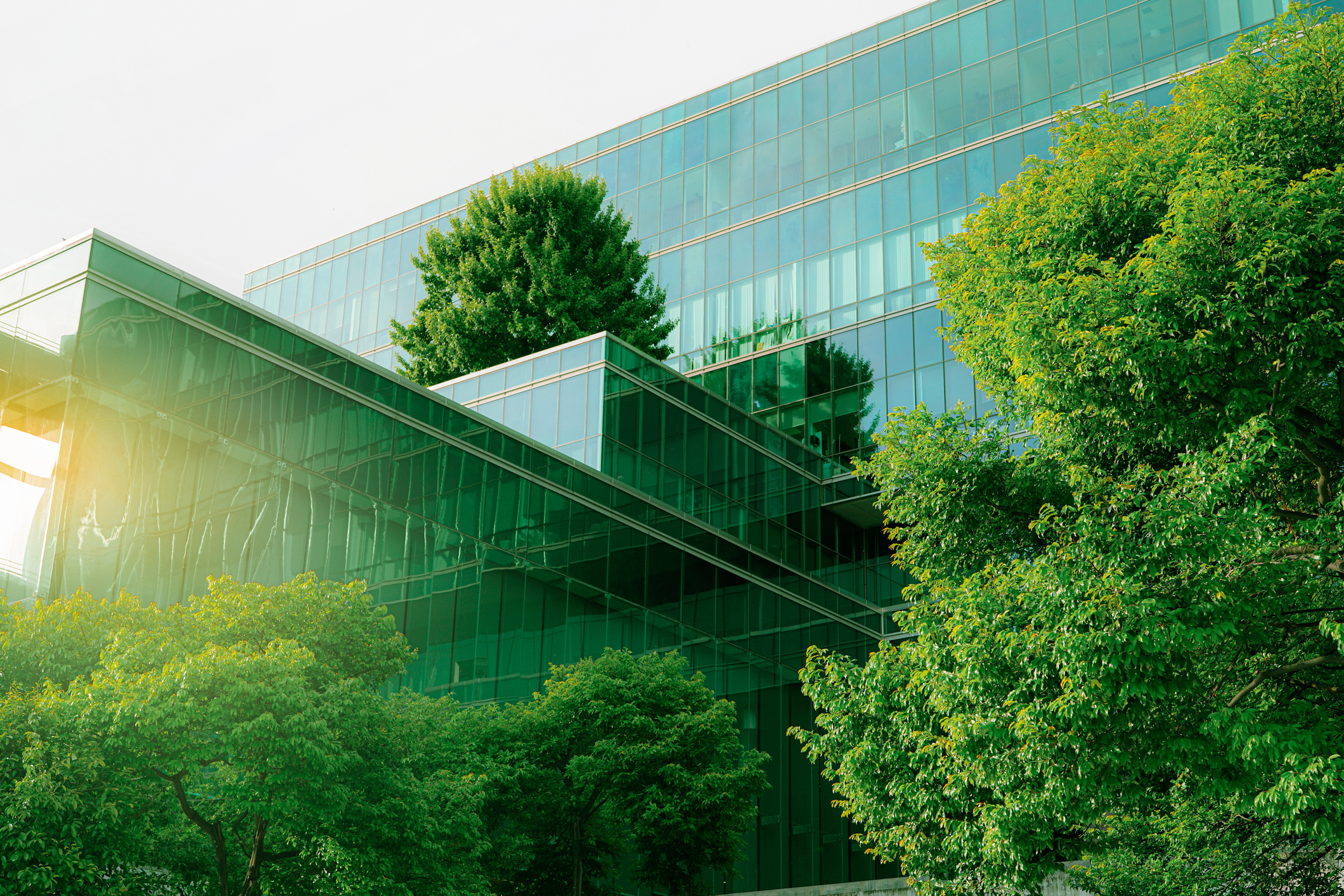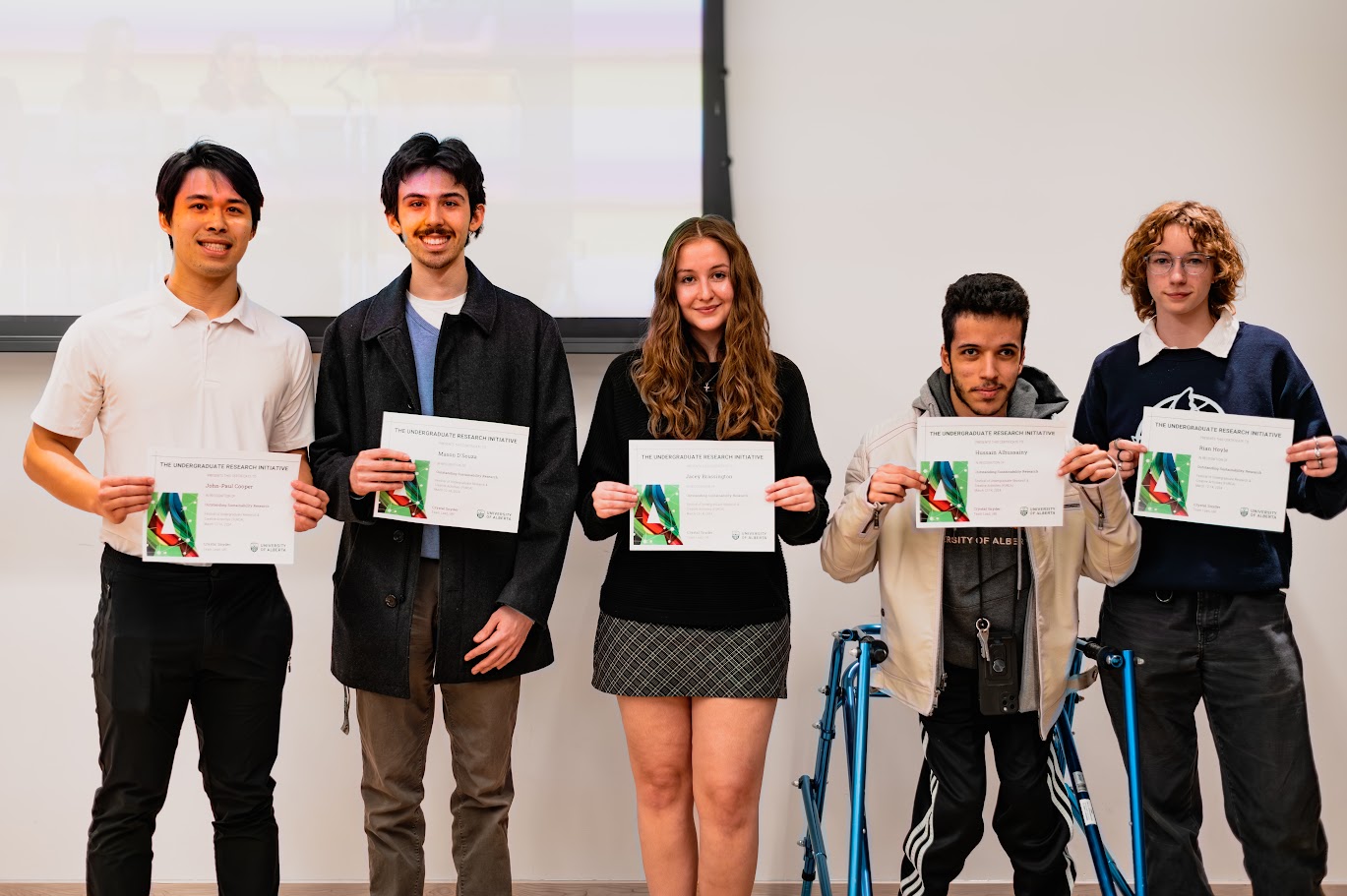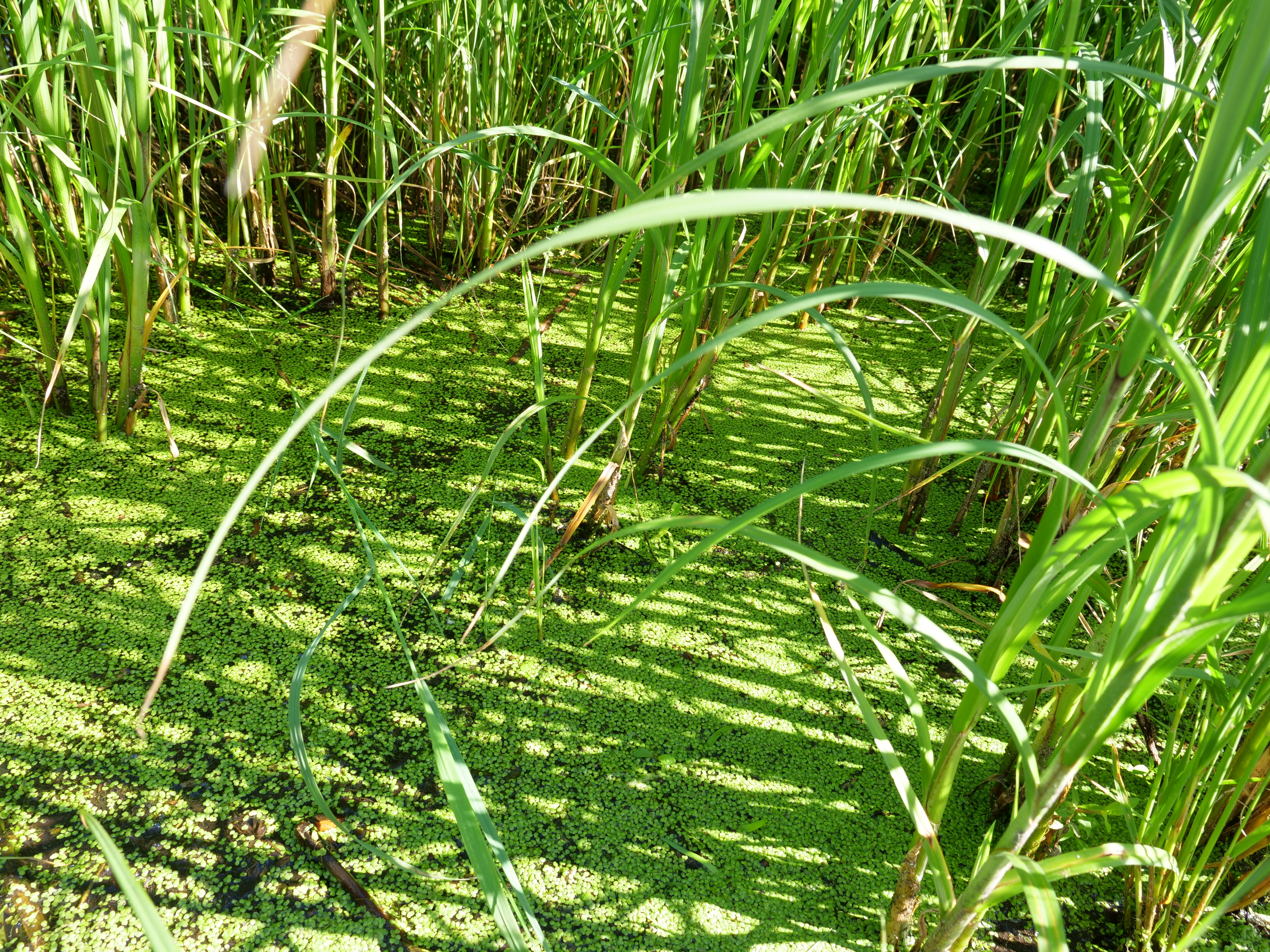Sustainability Scholars are growing community, keeping neighbourhoods green and fuelling the future
Each summer, University of Alberta graduate students in the Sustainability Scholars program help Alberta municipalities, businesses and non-profit organizations become more sustainable. These budding experts contribute knowledge they’ve acquired in their studies while gaining real-world work and research experience that can lead to careers in sustainability. They also make our communities more environmentally, socially and economically sustainable.
Here are stories from some of 2022’s outstanding crop of Sustainability Scholars.
Ella Kim-Marriott and the City of Edmonton
Growing community
Edmonton’s community gardens are growing more than just carrots and tomatoes — they’re also cultivating friendships, expanding networks of people and organizations across the city, and improving residents’ mental health.
That’s according to research completed by Master of Science in Rural Sociology student Ella Kim-Marriott on behalf of the City of Edmonton.
Kim-Marriott surveyed dozens of gardeners, interviewed community garden coordinators and attended workshops and events hosted by gardens in order to understand the social benefits these community hubs provide Edmonton’s residents.
“Across the board respondents said the gardens were providing them with mental health benefits,” Kim-Marriott said. “Eighty per cent and above of the people surveyed were saying that it was a positive thing.”
Gardeners told Kim-Marriott that they made new friends and felt more connected to their communities when given the chance to play in the dirt alongside their neighbors.
“There’s a big range of work people can do in these gardens, so anyone can contribute regardless of whether they’re young, old, new to the city or even new to the country,” Kim-Marriott said. “As a result, I think a lot of those things that might divide or isolate people disappear in the gardens, where there are lots of opportunities for mutual sharing and learning.”
Kim-Marriott also wanted to understand if the benefits provided by the gardens extend to the entire city, not just within the neighbourhoods where they were placed.
“It was exciting to see just how much community gardens are contributing to Edmonton’s food banks. They’re not just addressing food security needs within their own neighbourhoods; they’re also contributing that service to the city at large,” she said.
In addition to supporting food banks, she found that gardens helped one another by sharing information about best practices, and she found evidence that the gardens received assistance from the outside, such as one instance in which a farmer donated excess seeds to a garden.
“It’s a web of different organizations trying to address food insecurity in the city in different ways, but they’re all actually connected,” she said.
The survey and interviews gave gardeners a chance to express concerns, the most common of these being pest management, safety and theft.
Kim-Marriott recommended that the city create more opportunities for garden coordinators and organizations that are part of the network of people addressing food justice in the city to engage with each other, for example by hosting a conference.
“I’ve been an advocate for community gardens, so getting to see how valuable they are in research I’ve conducted was exciting,” Kim-Marriott said. “I’m hoping this project gives the city the evidence it needs to continue advocating for and funding community gardens.”
Ayesha Siddika and the Town of Stony Plain
Keeping Stony Plain green
Green spaces help urban areas conserve wildlife, reduce carbon emissions and allow nature to thrive. They also provide urban dwellers with relief from the noise and bustle of cities and towns.
Recognizing these vital features of urban green spaces, Alberta municipalities are developing strategies to preserve and expand the parks, paths and forests within their borders.
That’s why the Town of Stony Plain hired recent Master of Science in Civil and Environmental Engineering graduate Ayesha Siddika to develop a Greenspace Plan.
“The goal of this research was to establish areas as green spaces so that in the future if there are plans for development, the town can tell developers which areas have been classified as green space and must remain open for residents to use for recreation,” Siddika said.
Stony Plain decided to model its green space plan after Edmonton’s “Breathe” strategy, which envisions each Edmonton neighborhood containing a network of connected open spaces. Both plans aim to create a system of green spaces that, when taken as a whole, look less like trees struggling to grow through cracks in a parking lot, and more like a well-established system of roots that weaves through the urban environment.
Siddika visited the town’s natural areas to see which environmental assets they contained and how people were using them, but she said the work was not always a walk in the park.
“It was tricky because there are green spaces that residents use for recreational purposes, but which are actually designated as areas for development and have been waiting for the developer to begin building on them,” she said.
Siddika discovered that, in total, Stony Plain has 630 hectares of green space connected by 44.5 km of multi-use trails.
She also drafted a plan for how these spaces should be named — namely, by letting residents decide.
“Naming these places is important because it helps attract people and it gives the places an identity,” she said.
Thanks to Siddika’s work, Stony Plain can start finding a path forward for growing and preserving its many natural assets.
“Green spaces are so important because they give residents places where they can breathe,” Siddika said. “We all need spaces to enjoy the beauty of nature and spaces where the younger generations can play.”
Bingxin Hai and Enerflex
Fuelling the future
In an era when governments are advancing a transition to electric vehicles, some may dismiss biofuels as unnecessary. Electric engines don’t emit carbon; engines that run on biofuels do emit some carbon–why not go 100 per cent electric?
However biofuels remain a compelling solution to achieving Canada’s net-zero emissions by 2050 target, at least in the immediate future, according to bioresource technology PhD student Bingxin Hai, whose PhD research is investigating how to produce sustainable aviation fuel.
“I see great potential for sustainable aviation fuel (SAF), also known as biojet fuel, because SAF has the same chemical composition as traditional jet fuel,” Hai said. “You don’t need to make drastic changes to the existing engines and airframes–airplanes can stay the same. And we need to reduce emissions right away; we can’t wait 100 years.”
Although SAF doesn’t cut 100 per cent of the emissions in commercial aviation, it can, depending on the method used to produce the fuel, reduce emissions by up to 80 per cent in comparison to traditional jet fuel.
This potential for participating in the fast-developing biofuel sector sparked the interest of Enerflex, an integrated, global provider of energy infrastructure and energy transition solutions that delivers natural gas processing, gas compression, power generation, refrigeration, cryogenic processing and treatment solutions for produced water.
Enerflex wanted to know how their expertise in modularizing process technologies could play a role in the biofuel industry, and provide an understanding of biofuel markets, technologies and the biofuel policy landscape. Given her background researching SAF, Hai was the perfect candidate to guide them through this process.
Hai and partners at Enerflex determined that biofuels made using a “thermochemical” process would be a safe bet.
“Biofuels produced through the thermochemical process can be made from forestry waste and agricultural residues,” Hai said. “You start with the wood for example, and then convert that wood, through a process we call ‘gasification,’ into syngas, which contain carbon monoxide and hydrogen. You can then build those small molecules into larger chains in different arrangements, and this process creates fuel that will power engines.”
Hai continued engaging with Enerflex after her Sustainability Scholars placement ended. Now she’s playing an active role in informing Enerflex’s strategy to play in the biofuels space.
“Working with Enerflex is very different from what I’m doing at the university, which is more experimental,” Hai said. “I have to think about what is practical for the company. It has given me a broader view of the industry and a lot of opportunities to reach out to other companies and industry experts. It’s been a great opportunity for me to develop professionally.”
Want to see more of 2022’s Sustainability Scholars projects? Visit our YouTube page.



